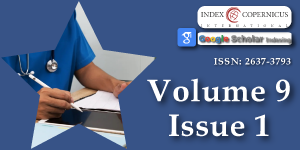Bilateral Trigeminal Neuralgia Refractory to Medical Therapy: Importance of A Multi-Therapeutic Approach
Main Article Content
Abstract
Bilateral trigeminal neuralgia refractory to medical therapy is a rare occurrence and it is mandatory to choose therapeutic procedures minimizing possible bilateral sensitive deficit due to the employment of bilateral mininvasive ablative techniques. A patient affected by bilateral trigeminal neuralgia refractory to medical therapy secondary to multiple sclerosis is presented. Multiple therapeutic tools were employed in this challenging pathology. The second and third left trigeminal divisions were involved by the neuralgia, while the third division was involved in the right facial side. Controlled radiofrequency thermocoagulation was employed for the isolated right third division, then radiosurgery was conducted for the left hemifacial side. After one month, because of the persistence of pain attacks of the left second trigeminal division, peripheral authorizations were performed.
Control of pain, with the withdrawal of medical therapy (BNI scale class I), was achieved in this patient with a multi-therapeutic approach. Radiofrequency thermorizotomy was performed for the right third division because neuralgia was very acute, and immediate pain relief was achieved. Pain in the left third trigeminal division regressed after radiosurgery, while pain in the left second division continued after radiosurgery, then peripheral alcoholization was performed with pain control.
Bilateral trigeminal neuralgia refractory to medical therapy should be treated by the dedicated neurosurgeon, avoiding bilateral ablative techniques for the same division and using neurosurgical techniques according to the trigeminal division interested by the neuralgia and according to the intensity of pain.
Article Details
Copyright (c) 2025 Fraioli MF, et al.

This work is licensed under a Creative Commons Attribution-NonCommercial 4.0 International License.
The Archives of Case Reports is committed in making it easier for people to share and build upon the work of others while maintaining consistency with the rules of copyright. In order to use the Open Access paradigm to the maximum extent in true terms as free of charge online access along with usage right, we grant usage rights through the use of specific Creative Commons license.
License: Copyright © 2017 - 2025 |  Open Access by Archives of Case Reports is licensed under a Creative Commons Attribution 4.0 International License. Based on a work at Heighten Science Publications Inc.
Open Access by Archives of Case Reports is licensed under a Creative Commons Attribution 4.0 International License. Based on a work at Heighten Science Publications Inc.
With this license, the authors are allowed that after publishing with the journal, they can share their research by posting a free draft copy of their article to any repository or website.
Compliance 'CC BY' license helps in:
| Permission to read and download | ✓ |
| Permission to display in a repository | ✓ |
| Permission to translate | ✓ |
| Commercial uses of manuscript | ✓ |
'CC' stands for Creative Commons license. 'BY' symbolizes that users have provided attribution to the creator that the published manuscripts can be used or shared. This license allows for redistribution, commercial and non-commercial, as long as it is passed along unchanged and in whole, with credit to the author.
Please take in notification that Creative Commons user licenses are non-revocable. We recommend authors to check if their funding body requires a specific license.
Wang Y, Guo W, Du Y, Li Y, Shi H, Qian T. Efficacy and safety of percutaneous balloon compression for bilateral trigeminal neuralgia: a retrospective study. Acta Neurochir (Wien). 2024;166(1):51. Available from: https://doi.org/10.1007/s00701-024-05947-w
Lozouet M, Garrido E, Bourre B, Grangeon L, Iasci L, Derrey S. Efficacy and clinical outcomes of percutaneous treatments for trigeminal neuralgia secondary to multiple sclerosis. Clin Neurol Neurosurg. 2024;249:108695. Available from: https://doi.org/10.1016/j.clineuro.2024.108695
Fraioli MF, Cristino B, Moschettoni L, Cacciotti G, Fraioli C. Validity of percutaneous controlled radiofrequency thermocoagulation in the treatment of isolated third division trigeminal neuralgia. Surg Neurol. 2009;71(2):180-3. Available from: https://doi.org/10.1016/j.surneu.2007.09.024
Harries AM, Mitchell RD. Percutaneous glycerol rhizotomy for trigeminal neuralgia: safety and efficacy of repeat procedures. Br J Neurosurg. 2011;25(2):268-72. Available from: https://doi.org/10.3109/02688697.2011.558946
Sekula RF, Frederickson AM, Jannetta PJ, Bhatia S, Quigley MR, Abdel Aziz KM. Microvascular decompression in patients with isolated maxillary division trigeminal neuralgia, with particular attention to venous pathology. Neurosurg Focus. 2009;27(5):E10. Available from: https://doi.org/10.3171/2009.8.focus09156
Wang L, Fan H, Xu X, Su S, Feng W, Wu C, Chen Y. Bilateral Transient Dilated and Fixed Pupils After Microvascular Decompression: Rare Clinical Experience. J Craniofac Surg. 2023;34(4):1296-1300. Available from: https://doi.org/10.1097/scs.0000000000009293
Fraioli MF, Strigari L, Fraioli C, Lecce M, Lisciani D. Preliminary results of 45 patients with trigeminal neuralgia treated with radiosurgery compared to hypofractionated stereotactic radiotherapy, using a dedicated linear accelerator. J Clin Neurosci. 2012;19(10):1401-3. Available from: https://doi.org/10.1016/j.jocn.2011.11.036
Shields LBE, Malkawi A, Daniels MW, Rao AJ, Plato BM, Yao TL, et al. Frameless image-guided linear accelerator (LINAC) stereotactic radiosurgery for medically refractory trigeminal neuralgia: Clinical outcomes in 116 patients. Surg Neurol Int. 2024;15:181. Available from: https://doi.org/10.25259/sni_101_2024
Luna AL, González JA, Guardo LL, Pájaro Castro N. CyberKnife Radiosurgery for refractory bilateral trigeminal neuralgia. Case report. Colomb Med (Cali). 2022;53(4):e5005283. Available from: https://doi.org/10.25100/cm.v53i4.5283
Goyal-Honavar A, A CK, Dwarakanath S, Arimappamagan A, Prabhuraj AR, Beniwal M, et al. Efficacy and Safety Profile of Gamma Knife Radiosurgery in Classic and Idiopathic Trigeminal Neuralgia. World Neurosurg. 2024;192:e172-e178. Available from: https://doi.org/10.1016/j.wneu.2024.09.062
Mori Y, Matsushita Y, Koyama K, Masago A. Stereotactic Radiosurgery for Trigeminal Neuralgia Caused by Vertebrobasilar Compression: A Report of Four Cases. Cureus. 2024;16(1):e52880. Available from: https://doi.org/10.7759/cureus.52880
Cheuk AV, Chin LS, Petit JH, Herman JM, Fang HB, Regine WF. Gamma knife surgery for trigeminal neuralgia: outcome, imaging, and brainstem correlates. Int J Radiat Oncol Biol Phys. 2004;60(2):537-41. Available from: https://doi.org/10.1016/j.ijrobp.2004.04.020
Tacconi L, Miles JB. Bilateral trigeminal neuralgia: a therapeutic dilemma. Br J Neurosurg. 2000;14(1):33-9. Available from: https://doi.org/10.1080/02688690042889.
Cruccu G, Biasiotta A, Di Rezze S, et al. Trigeminal neuralgia and pain related to multiple sclerosis. Pain. 2009;143(3):186-91. Available from: https://doi.org/10.1016/j.pain.2008.12.026
Eldridge PR, Sinha AK, Javadpour M, Littlechild P, Varma TR. Microvascular decompression for trigeminal neuralgia in patients with multiple sclerosis. Stereotact Funct Neurosurg. 2003;81(1-4):57-64. Available from: https://doi.org/10.1159/000075105

